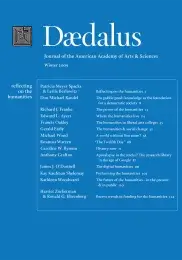Recent trends in funding for the humanities
Never abundant, financial support for the “academic humanities”1 is now scarce. How scarce it is, both in absolute and relative terms, and whether the humanities now confront particularly hard times, are the pressing questions. To piece together an answer, we ask first how much the government, foundations, and private donors provide for the humanities now compared to estimates John D’Arms made in 1995, when he completed his important review of “funding trends.”
Then we probe expenditures universities and colleges make on the humanities. Is there evidence, for example, in institutional budget allocations that the humanities are holding their own, or have rising costs of other academic activities, such as scientific research, been accompanied by reduced support for the humanities? And last, because public universities are so large and numerous, and because many operate on conspicuously tight budgets, we ask how well the humanities in this class of institutions have fared in comparison with their counterparts at private universities. The answers to such questions are not mere matters of financial accounting. Although much can be achieved in the humanities with quite small investments, the pursuit of excellence in scholarship and teaching in these fields is not cost-free. For relevant evidence, we draw on the American Academy of Arts and Sciences’s useful Humanities Indicators Prototype, as well as a variety of other available (but often imperfect) data sources.1 . . .
